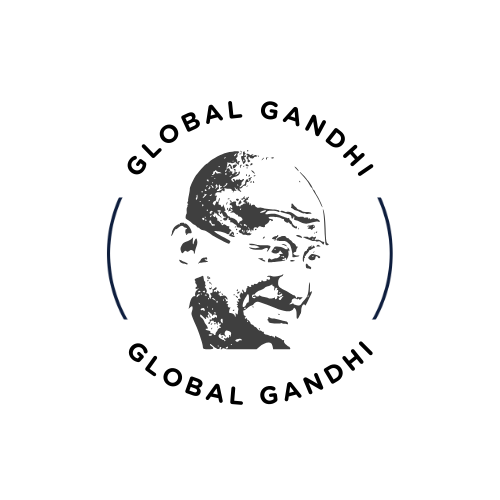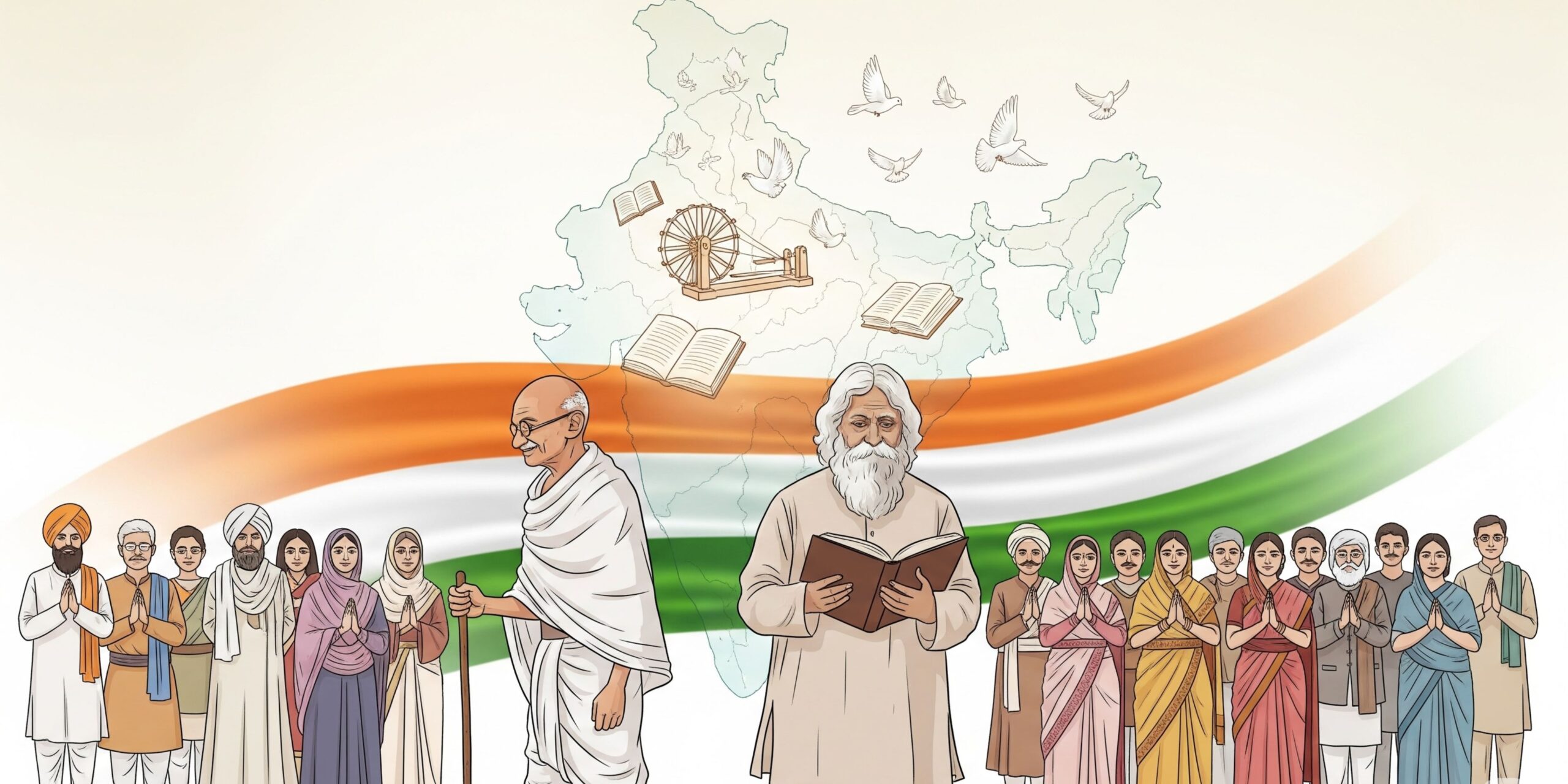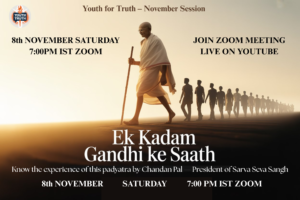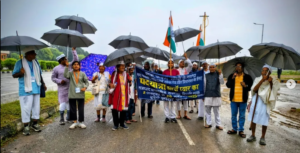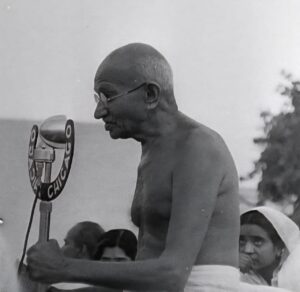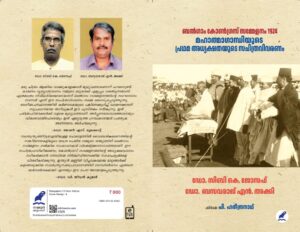Introduction
” Where the mind is without fear and the head is held high;
Where knowledge is free;
Where the world has not been broken up into fragments by narrow domestic walls;
Where words come out from the depth of truth;
Where tireless striving stretches its arms towards perfection;
Where the clear stream of reason has not lost its way into the dreary desert sand of dead habit;
Where the mind is led forward by Thee into ever-widening thought and action
Into that heaven of freedom, my Father, let my country awake.”
Rabindranath Tagore, “Gitanjali 35” from Gitanjali (Song Offerings): A Collection of Prose Translations Made by the Author from the Original Bengali, intro. by W. B. Yeats (London: MacMillan, 1913).
A Teacher’s Gift of Wisdom
This I received from one of my teachers on the eve of the 79th anniversary of India’s independence with a title “My Prayer on Independence Day”. I think these words of wisdom give enough food for introspection on the eve of Independence Day. In fact, Tagore’s lines were an awakening call to overcome the narrow vision of nationalism to a state of enlightened vision of freedom, truth, knowledge, and unity. Such words instilled in the minds of people a dream for a free and enlightened India. It was a vision for the whole of humanity. He envisioned a world where people are united, free from fear and division, and progress is driven by reason and striving for perfection.
Tagore’s Inclusive Vision: Bharat Tirtha
Similarly one of my senior friends whom I met in Himalayas recently brought into my notice a poem of Tagore, “Bharat Tirtha”, from the original Bengali edition of Gitanjali (1910), could be the people’s anthem in every state, for an inclusive vision of India. He reminded me that this poem of Tagore is greatly significant in an increasingly fragmented society, and polarised politics.
This provides an alternative vision of an inclusive India. Like the national anthem, Tagore’s “Jan Gan Man”, this one is quite amenable to translation in Indian languages.
However this poem was not included in the English version of ‘Gitanjali: Song Offerings’ published in London. For this small collection, Tagore was awarded the Nobel Prize in literature in 1913. The English version of that book, is quite different from the original Bengali collection published two years earlier.
Excerpt: Bharat Tirtha (Indian Pilgrimage)
Here is an extract of Tagore’s poem “Bharat Tirtha”, in English, the “Indian Pilgramage”. The very inclusive nature of this conception of who is an Indian, expresses the poet’s shared sense of humanity, at home in the world.
“None can tell, at whose beckoning, vast waves of humanity
In currents unstoppable, from the unknown here arrived,
To merge into the Great Sea!Here Aryans, non-Aryans, Dravidians, Chinese
Sakas, Hunas, Pathans, Moguls in one body, lo, were united.The doors today have opened in the West, bearing gifts, behold, they arrive—
All shall give and take, mingle and be mingled in, none shall depart dejected
From the shore of the sea of Bharata’s Great Humanity!Come, O Aryans, come, non-Aryans, Hindus and Mussulmans—
Come today, O Englishmen, come, oh come, Christians!
Come, O Brahmin, cleansing your mind
Join hands with all—Come, O Downtrodden, let the burden
Of every insult be forever dispelled.
Make haste and come to Mother’s coronation, the vessel auspicious
Is yet to be filled With the sacred water sanctified by the touch of all
By the shore of the sea of Bharata’s Great Humanity!”
(Rabindranath Tagore 2 July 1910 Translated by Monish R. Chatterjee (1991).
Read here
(The complete poem in Bengali script, also with English alphabets, and a partial translation is available here. This is an initiative to make all of Tagore’s writings available in public domain.
Geetabitan Link)
Gandhi’s Vision of Swaraj
Gandhi also cherished similar though not identical views on nationalism and vision of inclusive India. He wrote in his seminal work Hind Swaraj, “we want English rule without the Englishman. You want the tiger’s nature, but not the tiger; that is to say, you would make India English. And when it becomes English, it will be called not Hindustan but Englistan. This is not the Swaraj that I want.”
As early as 1909, Gandhi rejected the superficial form of independence where India merely adopts British systems and institutions without fundamentally changing its own identity and way of life. Gandhi’s vision of Swaraj extended far beyond simply replacing British rule with Indian rule. It was about achieving self-rule in the truest sense — both internal and external — which involves a fundamental transformation of Indian society and a return to its own values and traditions. The independence we achieved was not what Tagore and Gandhi visualized. India has a long way to go to achieve such a broad minded vision of India.
Independence: Celebration and Reflection
The commemoration of independence from colonial rule is a moment to cherish which makes everyone proud, but it should also become an occasion to reflect upon the journey of a nation in all these years towards the values cherished by leaders who led the historical struggle by the sheer power of nonviolence and the supreme sacrifices of freedom fighters. On the eve of the 79th Independence Day, we should ask ourselves whether we have been able to preserve the values of freedom, democracy, and inclusivity that were at the heart of every patriotic person.
The Partition and Nehru’s Tryst with Destiny
The freedom which we got — the British divided India into two countries against the wishes of Mahatma Gandhi, who was a leading figure of the freedom movement. On August 14, 1947, Jawaharlal Nehru, in his iconic “Tryst with Destiny” speech, delivered on the eve of India’s independence, stated that “at the stroke of the midnight hour, when the world sleeps, India will awake to life and freedom.” This speech marked the symbolic transfer of power from British colonial rule to independent India.
Nehru paid a glowing tribute to Mahatma in his historic speech:
“On this day our first thoughts go to the architect of this freedom, the Father of our Nation, who, embodying the old spirit of India, held aloft the torch of freedom and lighted up the darkness that surrounded us. We have often been unworthy followers of his and have strayed from his message, but not only we but succeeding generations will remember this message and bear the imprint in their hearts of this great son of India, magnificent in his faith and strength and courage and humility.”
Gandhi’s Refusal to Celebrate
However, on the eve of India’s first Independence Day the architect of freedom was not in Delhi. He made up his mind earlier and explained why it was not a moment of rejoice and celebration in a Speech at Prayer Meeting New Delhi, July 20, 1947.
“I cannot rejoice on August 15. I do not want to deceive you. But at the same time, I shall not ask you not to rejoice. After all I cannot expect everything to be ordered according to my wish. I did not want India to be partitioned but it has been partitioned. What good can come of crying over it? Even if something worse had happened, I would have had to put up with it. India’s partition has grieved me more than it could grieve you… But the people in whose hands we have entrusted the reins of power are big people. If they say that we should have celebrations on Independence Day, then you should do so. You should not worry why Gandhi does not join in the celebration. The Congress does not force anyone to celebrate. That I shall not celebrate does not mean that the British will not be leaving.”
Gandhi concluded his prayer speech with the following words:
“I must finally say once again that only when the minorities both in India and Pakistan say that they are happy can freedom be said to have been really gained and only then will it be time for us to rejoice.”
In a Speech at Prayer Meeting in New Delhi on July 27, 1947 Gandhi said:
“Only when there is no poison in our hearts can we genuinely celebrate August 15 as Independence Day”.
Gandhi in Bengal During Partition Violence
During this tumultuous period, Gandhi’s whole effort was to bring peace and amity between Hindus and Muslims. He arrived in Bengal on August 9 and stayed at Sodepur Ashram. His original plan was to proceed to Noakhali. However, taking note of escalating communal violence in Calcutta he cancelled the trip to Noakhali for the time being and focussed on the riot-torn Beliaghata area.
He stayed in a building called Hyderi Manzil in Beliaghata from August 13th to September 4th. His presence there, alongside H.S. Suhrawardy, head of the Bengal Provincial government contributed towards fostering communal unity and brought an end to the violence.
On August 14, 1947, at a prayer meeting in Beliaghata, Calcutta, Mahatma Gandhi urged everyone to observe a twenty-four-hour fast and engage in spinning for India’s well-being. He believed that if Calcutta could restore sanity and genuine friendship between communities, then places like Noakhali and the rest of India would find safety.
Gandhi’s presence created a miracle: Muslims celebrated alongside Hindus, shouting the same slogans of joy, and the tricolour flag was flown without hesitation. The most significant development was the mutual acceptance between communities, with Hindus being admitted to mosques and Muslims to Hindu temples.
The Call for Inclusivity
It has to be remembered that mutual acceptance and inclusivity are fundamental to India’s identity as a diverse nation with a rich tapestry of cultures, languages, and religions. This spirit was nurtured by Tagore, Gandhi and leaders of the freedom struggle. This inclusive approach is the need of the hour than any other time in the history of the country.
On this occasion of independence, we should focus on India’s diverse and inclusive culture, Hindu-Muslim unity, and the spirit of equality rather than dwelling on the horrors of the Partition of India. What is needed to foster a positive approach and counter negative narratives that create division based on religion, caste, or background. Gandhi could arrest communal tensions in different parts of the country because he really practiced what he preached. It is the duty of everyone who believes in such a vision to publicly practice it and become a living illustration of recognizing diversity and practicing inclusiveness in day-to-day life.
Acknowledgment
Note: Author would like to acknowledge the insights and comments received from Prof. Vinod Kumar Kallolickal and Barun Mitra.
About the Author
Dr. Siby K. Joseph is a noted Gandhian Scholar and academic currently serving as Director, Sri Jamnalal Bajaj Memorial Library and Research Centre for Gandhian Studies, Sevagram Ashram Pratishthan, Sevagram,Wardha- 442102, Maharashtra
📧 Email: directorjbmlrc@gmail.com
